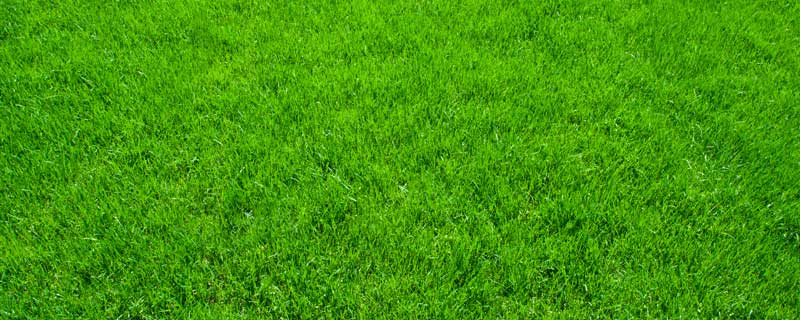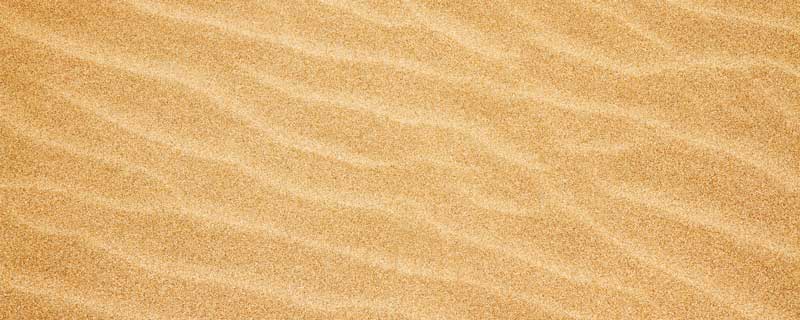
Most runners are creatures of habit by nature, running the same go-to routes, at the same pace, in the same shoes, at the same time of day. Running the trusty four-mile loop around town also means the surface never changes. The creatures of habit can tell you where every pothole, overgrown bush, dip in the road, and crack in the sidewalk lie, right down to the tenth of a mile. If this sounds familiar, then take this opportunity to learn how breaking new ground can be a beneficial tool in turning any runner into a biomechanically stronger one.
Before comparing terrain, it’s important to consider a few factors regarding how the body reacts with the ground. It is common knowledge that running has an impact on the musculoskeletal system; any non-runner will use this fact relentlessly in protest of the sport. Body mass, form, and running surface all play a role in just how much impact actually results. In the most literal sense, the body ‘collides’ with the ground with a force that is four to five times the runner’s body weight with each step and roughly 180 times each minute (McMahon & Greene, 1979).
The amount of energy needed to oscillate the legs through one stride is optimized by keeping the support phase short (when one foot is in contact with the ground) and by pushing off ‘reactively’ (Bosch & Klomp, 2005). Reactive muscles essentially recycle energy between phases as a function of muscle elasticity and ultimately save the athlete energy costs over the long haul. Long ground-contact results in greater energy expenditure and less recycling. The body is required to absorb the shock of the ground, which reverberates through the tendons and muscles with elastic recoil, allowing the desired upward-forward propulsion to initiate, as if on spring-containing legs.
Not only do the legs act as natural, built-in springs, but the ground surface itself can also. The degree of compliance, or ‘give,’ that a surface has, will determine the speed of energy transfer between the foot and the ground. Harder surfaces return the energy more quickly, allowing the athlete to cover ground with greater speed. More malleable surfaces result in longer ground contact time, as a result of their supple properties, which is directly correlated to slower turnover, and thus, diminished ground coverage and speed. The runner’s legs, which remember, are also springs, must adjust stiffness according to the compliance of the terrain; this is necessary to yield the optimal footstrike duration for speed production and likewise, the lowest cost of oxygen demand. In other words, the body needs a happy medium in flexibility to be most economically efficient.
Think of the hard ground as a stiff spring and the soft ground as a loose spring; this should help with visualization as we break down the individual surfaces:
Road

It may appear that the hardest surface would provide the most stable platform for push-off, and thus, allow for the greatest speed. However, road asphalt is actually so dense it dampens the ability of the legs to gain vertical force from its return (Feehery, 1986). In effect, the impact of the road overpowers the elastic energy return to the legs, resulting in a neutralization of positive return. While the muscles are busy absorbing the shock of impact, the road quickly returns the elastic energy back to the leg, but, the shocked muscles are ill-prepared to receive it. The body attempts to ‘cushion the blow’ by slowing the landing phase; this ‘braking’ motion results in longer ground contact time, and slower speeds. Interestingly enough, concrete was found to have the most impact and least return of any surface, due to its density (Feehery, 1986). Moreover, a bone and joint analysis study of sheep walking on concrete over two years found thickened subchondral bone plates and bone cortex, resulting in less elastic bone and poor shock absorption (Feehery, 1986). In clinical terms, this is classic, premature osteoarthritis, or “wear and tear” arthritis. For the sake of your joints, when possible, it is better to hit the pavement rather than the sidewalk in order to reduce impact.
Grass

Grass surfaces were found to be comparable to asphalt with returning elastic energy in the form of vertical propulsion (Feehery, 1986). The slight ‘give’ of the surface and its texture alone requires the legs to work harder to achieve the same effort as on the road, though without the impact. This makes grass a great training tool for athletes looking to build leg strength and turnover while keeping the risk of injury low. Provided that the grass is well-kept and the ground fairly level, some adventurous athletes choose to run barefoot for the added bonus of foot and ankle strengthening. A runner with weak ankles should use caution when training on grass, only gradually incorporating it into his or her weekly mileage.
Sand and Snow

Both ground contact time and step length have been found to increase with very compliant surfaces, such as sand or snow, which consequently decreases a runner’s speed (McMahon & Greene, 1979). Snow can be slick and often accompanies icy roads, making it ill-suited for the novice runner. Deep sand running provides a solid resistance workout for the leg muscles, especially the calves, with very minimal impact on the joints. If prone to Achilles’ tendon injuries, avoid going barefoot and preferably run on the more compact sand at the water’s edge. The slope of beach dunes, especially near the water is something to consider also; run in both directions equally to avoid developing muscle imbalances, or simply find a flatter beach. Sand running definitely provides a workout-burn and quick fatigue, but is best left for shorter distance runs.
Trail

Trail running is a great challenge, offering both terrain variety and scenery to break the monotony of miles. The demand of the surface depends on the technicality of the trail. Wide cinder-packed bridle trails are typically flat and clean of obstacles, whilst narrow, single-track trails are typically for the more advanced runners craving a natural agility course. The sheer nature of an ordinary trail requires the runner to adapt quickly to rocks, roots, water hazards, sharp turns, unexpected creatures, and fallen trees/branches. The earth surface itself is low-impact. However, adverse weather can make for dangerous running conditions; caution should be used in late autumn or after a winter storm, where leaves and snow may conceal hidden holes and rocks/roots.
The act of trail running uses a variety of horizontal and oblique movements to achieve ideal foot placement which means more stabilizer muscles are recruited than with straight-line running, delaying the onset of fatigue in the large muscle groups of the legs (Farango, 2009). The recruitment of additional muscles means the demand for oxygen also increases, which is why trail running feels tougher on the cardiovascular system than other surfaces. Leg turnover increases as quick reactivity and calculated adjustments must be made to maintain the same pace and effort level over the course of a run; this helps with speed development and stride efficiency both on and off the road.
Treadmill

The treadmill is most always the beginner’s first choice for safe, controlled running. One study found that the plantar forces on the foot, a measure of injury-risk, were lowest with treadmill running (Hong, Wang, Li, & Zhou, 2012). Due to the in-motion belt’s assistance during the ground contact (stance) phase of a runner’s stride, a particular speed can be achieved with less propulsive force and impact as compared to running on any other surface (Hong et al., 2012). The compliance of treadmill belts can vary greatly between company models, but all in all, provide a great surface for lower-impact running and injury rehabilitation.
Track

Popular in the college and professional indoor track-and-field world, ‘tuned’ tracks are said to contain the optimal amount of stiffness to produce peak energy return, and thereby, peak speeds. It has been found that a surface that is two to four times more rigid than a runner’s leg stiffness can produce the greatest return in elastic energy (Feehery, 1986). These tracks, such as those at Harvard and Yale University, are typically of wooden construction with rubber, banked surface for centrifugal effect, advertently producing some of the fastest times in the world.
All things considered, the variety of surface alternatives available provide a function and benefit for whatever improvement strategy a runner may be seeking. Even if speed isn’t a specific focus of the training plan, the manner in which these surfaces tax the body differently adds a unique challenge for the body to tackle and also serves as a form of recovery for overused muscles. The bottom line is simple: new surfaces provide an opportunity for bored muscles to experience a different feel (termed ‘overload’). Where there is muscle overload, there is muscle confusion, which leads to adaptation accompanied by strength building. For all the creatures of habit out there, do the body a favor; get off the beaten path and find fresh inspiration by treading over new ground.
Please share this article so others may benefit.
[mashshare]References
Bosch, F. & Klomp, R. (2005). Running: Biomechanics and exercise physiology applied in practice (pp.181-188). Maarssen, Netherlands: Elsevier.
Farango, S. V. (2009). Women are naturals for trail running. Triathlon Life, 12(4), 54-55.
Feehery, R. V. (1986). The Biomechanics of running on different surfaces. Clinics in Podiatric Medicine and Surgery, 3(4), 649-659.
Hong, Y., Wang, L., Li, J. X., & Zhou, J. H. (2012). Comparison of plantar loads during treadmill and overground running. Journal of Science and Medicine in Sport, 15(6), 554-560.
McMahon, T. A. & Greene, P. R. (1979). The influence of track compliance on running. Journal of Biomechanics, 12, 893-904.



Loved the term “reactively pushing off”. I’m well aware of it, but had never encountered that term before!
Hello. Thank you for your post. Would you be able to helpe me answer the differences in the surfaces of a synthetic track vs ashpalt vs hard packed dirt? I will incorporate hill running with my sprinters. They will be running anywhere from 80% to 95% on these hills. In my professional career as a sprinter, I ran hills on asphalt, packed dirt and even stair running on cement. During those years, I never experienced any joint pain. But, I want to be careful with these college students and I am not sure if there is a huge difference between the surfaces of a synthetic track vs asphalt vs hard packed dirt. I am not sure if the surface of asphalt and hard packed dirt is so much less forgiving or just minute compared to a synthetic track. Plus, I do understand that many sythentic tracks could be extremely hard or squishy. Thank you!